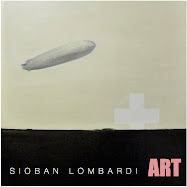
as yet untitled, 2009
oil on canvas, 84”w x 78”h
I recently posted about the needless tragedy that occurred in a makeshift sweat lodge at James Arthur Ray’s Spiritual Warrior retreat in Arizona. There are several facts we know, among them: the retreat cost each participant almost $10,000, the participants fasted for 36 hours then attended a breakfast buffet before entering the sweat lodge, three people died and their families are suing, and the aforementioned facilitator has put his Los Angeles home on the market to fund the costs of his legal defense. Many other questions will remain unanswered for some time.
What were these people looking for? This is the question that continues to sit with me. Indeed, what is it that any of us is looking for? It may be something idealistic, such as I am looking for equality among all people; it may be necessary, as in I am looking for a job; it may be immediate as in I am looking for my keys. (I look for my keys every morning.)
I recently began a body of work centered on this question and am asking for your help. Tell me what you are looking for. Your pursuit may fall within any and all of the categories - this doesn’t matter. Please tell me in the comment section following this post, and use the anonymous option when responding. If possible, please forward this post to friends and acquaintances so that they too may respond.
Whatever it is you seek, I hope you find it.







